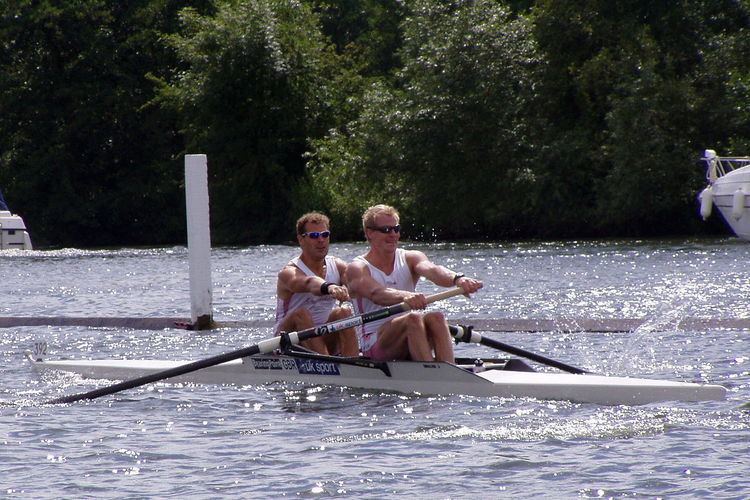 | ||
Lightweight rowing (abbreviated Lwt or Lt) is a category of rowing where limits are placed on the maximum weight of competitors. The rationale is that larger, taller people have a significant physical advantage and tend to dominate the sport. A lightweight category gives average sized individuals the ability to compete against their peers, but rowers who are tall and thin generally have an advantage over those who are shorter but broader. According to the International Rowing Federation (FISA), this weight category was introduced "to encourage more universality in the sport especially among nations with less statuesque people".
Contents
Although lightweight rowing is the counterpart to heavyweight rowing, it is a fairly different sport, relying much more on ideal body composition and technique than raw strength.
At international level for crew boats the limits are:
For single sculls the limits are 72.5 kg and 59 kg for men and women respectively.
History
The first lightweight events were added to the World Championships in 1974 for men and 1985 for women. Lightweight rowing was added to the Olympics in 1996 but this came under threat in 2002 when the Programme Commission of the IOC recommended that, outside combat sports and weightlifting, there should not be weight category events. The Executive Board overturned this recommendation and lightweight rowing continues at the Olympics.
There are two Olympic-class lightweight events: Men's Double Sculls and Women's Double Sculls. The World Championships include lightweights' events for all classes of crew, and in Olympic years a reduced World Championship regatta includes all events that are not represented at the Olympics. Up until 2016 the Men's lightweight four was an event offered at the Olympics up until FISA controversially removed the event to offer the women's open coxless fours to increase equality between the genders. Although separate to the IOC the argument still stands on the events offered like ( Rythmic Gymnastics and Syncronised swimming) both independent female events.
Top lightweight crew teams can go faster than heavyweight teams. For example, at the 2010 Head of the Charles Regatta, the winner of the Lightweight Eights Men race (Princeton University) would have placed 5th in the Championship Eights Men race, ahead of Deutscher Ruder Verband (a U-23 German team), Cornell University, University of Wisconsin and Brown University. And at the 2012 Head of the Charles Regatta, the winning time in the Lightweight Eights Men race of 14:35.71 (Harvard) was faster than the winning time in the Championship Eights Men race (14:37.27, University of Washington). At the 2013 Princeton Chase Regatta, the lightweight team from Yale University rowed the fastest time of the day, posting a score faster than any heavyweight crew at the regatta, including those from Princeton University, Northeastern University, and University of California-Berkeley.
United Kingdom
In the United Kingdom, lightweight rowing is less prevalent than in the USA. At university rowing level, lightweight categories are offered at BUCS events, such as BUCS Regatta, alongside openweight categories. In club rowing, regattas less often offer lightweight events. An exception is Henley Women's Regatta where there are numerous lightweight categories. At Henley Royal Regatta lightweight rowers are expected to compete in openweight categories.
Under British Rowing rules of racing, the lightweight limits during winter are different from those in summer.
United States
At the collegiate level, many larger American Division I schools can field between one and three lightweight boats for both men and women. In recent years the practice of juniors training down to a weight has been questioned, as low BMI has been linked to health and growth problems in adolescents.
In both lightweight men's and lightweight women's collegiate rowing, competition at the school-funded 'Varsity' level is small but fiercely competitive; the de facto national championship for both disciplines is the Intercollegiate Rowing Association Championship held each year on Mercer Lake in New Jersey on the weekend after Memorial Day. However, several club rowing programs (e.g., California Lightweight Crew), which receive minimal or no school funding, consistently field lightweight crews that compete for Division III equivalent titles at the Dad Vail Regatta on the Schuylkill River in Philadelphia, and, most recently, at the American Collegiate Rowing Association Championships.
In the U.S. Collegiate category, the following limits apply as of spring 2011:
In the Junior category, the following limits apply as of spring 2013:
